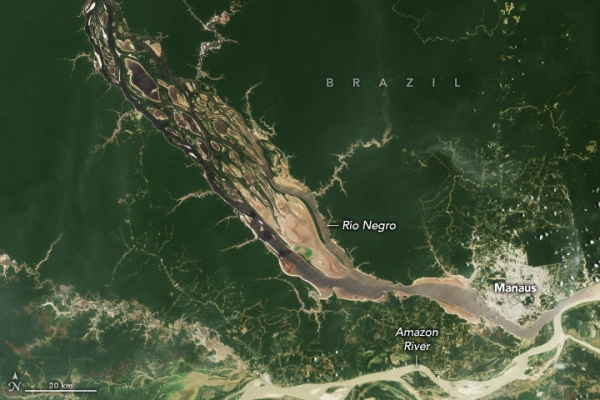July through October fall within the dry season in the western and northern Amazon rainforest, but a particularly acute lack of rain during this period in 2023 has pushed the region into a severe drought.
The OLI (Operational Land Imager) instrument on Landsat 8 captured this image (right) of the parched Rio Negro in the Brazilian province of Amazonas near the city of Manaus on October 3, 2023. On that date, the level of the river, the largest tributary of the Amazon River, had dropped to 15.14 meters (50.52 feet), according to data collected by the Port of Manaus. For comparison, the image on the left shows the same area on October 8, 2022, when the water level was 19.59 meters, a more typical level for October. Rio Negro water levels continued to drop in the days after the image was collected, reaching a record low of 13.49 meters on October 17, 2023.
Some areas in the Amazon River’s watershed have received less rain between July and September than any year since 1980, Reuters reported. The drought has been particularly severe in the Rio Negro watershed in northern Amazonas, as well as parts of southern Venezuela and southern Colombia.
“Overall, this is a pretty unusual and extreme situation,” said René Garreaud, an atmospheric scientist at the University of Chile. “The primary culprit exacerbating the drought appears to be El Niño.” This cyclical warming of surface waters in the central-eastern Pacific functions somewhat like a boulder in the middle of a stream, disrupting atmospheric circulation patterns in ways that lead to wetter conditions over the equatorial Pacific and drier conditions over the Amazon Basin.
Read more at NASA Earth Observatory
NASA Earth Observatory images by Wanmei Liang, using Landsat data from the U.S. Geological Survey.


